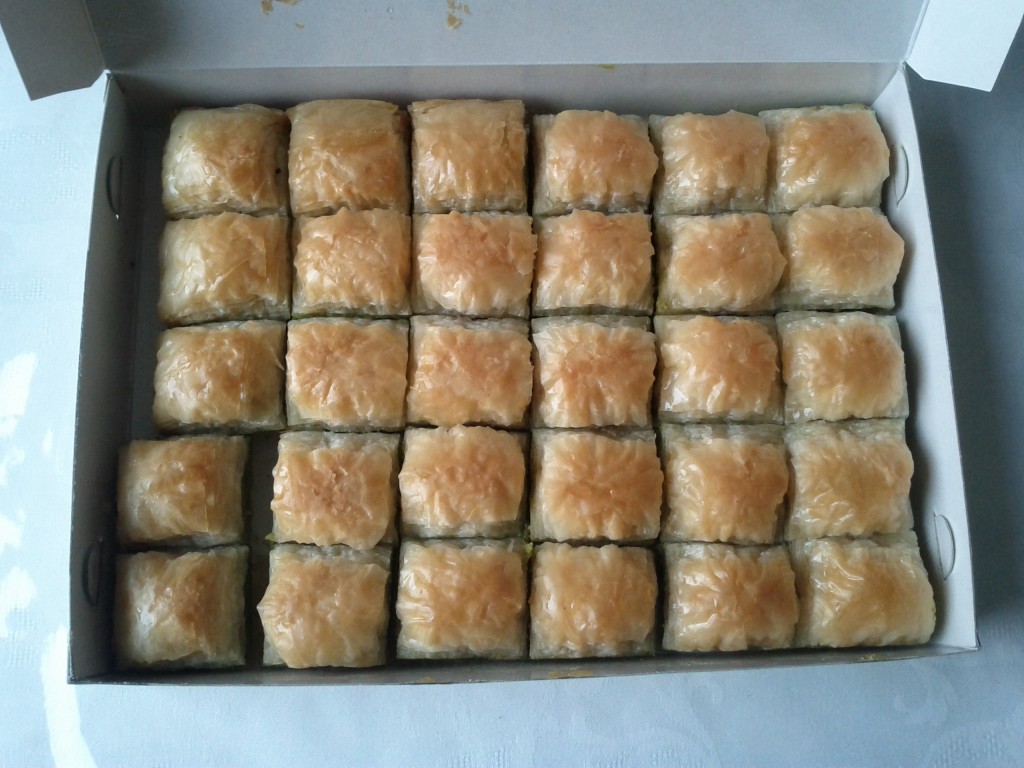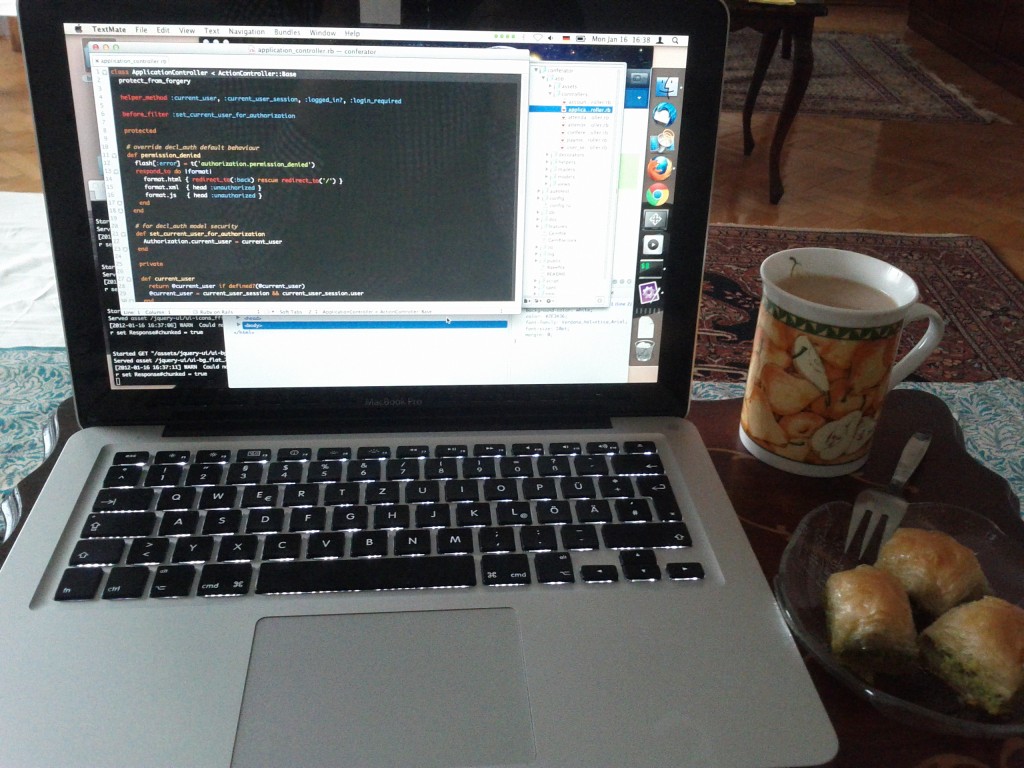What is the worst you could wish for someone?
😀

You wouldn’t believe it … snow in Istanbul 🙂
Customer: (buys a decent set at a breakfast place in Istanbul Sabiha Gökçen Airport)
Tenant: Thri … ahh … (then silently points at the number on the cash register)
Customer: (hands over a $100 bill)
Tenant: (silently leaves to get change, but doesn’t tell them)
CHAOS!!! 😉
Why would anyone with no workable knowledge of English (because she even struggled with the 3 -> 30 transition 😀 ) work behind the counter at a busy food place in the international flights section?
I just watched a documentary and one banker explained the root cause for the west’s current financial turmoil in a intriguing way:
Banking should be boring.
I find that to be very true 😀

This is crazy … it took us 3,5 h to get from Erenköy to Halkali … the traffic in Istanbul is crazy … and today was especially bad … I attributed this to three factors.
(Update: I was later assured it wouldn’t have been much different anyway. 😉 )
Interestingly there was no visible difference in traffic habits at all except for one instance: at intersections because all the traffic lights were out and there is no traffic police any more people would lock them up by driving onto intersections from all directions at once. Nobody letting anyone else through … crossing 3 lanes just 100m before to take an exit (on a already clogged up freeway) … ambulance pursuit … “parking” broken down cars on the middle lane … no drains, so that Metrobuses would create huge splashes of water onto the head-on traffic (Germans would talk about “Bodenversiegelung” or “impervious surfaces“) … the list of silly to right out dangerous could go on. m(
I take from this that traffic in Istanbul is already so chaotic (or at the verge of collapse) that you see almost no difference in cases where even the last elements of order are removed … it’s all basic instincts … remember we are talking about Turkey here. 😛
Although I was assured that blackouts were rare, there were indications that some other people seemed not so sure about that and took precautions. Although there was no electricity anywhere the mobile networks seemed to work just fine. Also some buildings seem to have emergency generators for getting lifts, stair case lights and automatic door locks to work again. I was honestly surprised … I would not have thought that the Turkish would seriously plan for cases of emergency (at least on a macro level). 😉
Things you might not know … at least I didn’t until recently …
I thought that I might spend some time enjoying StarCraft II while away from home for a few days and get a little better at it. 😉
Well, it turns out that when you update it and don’t log into Battle.net it thinks you have the Starter Edition (which is Blizzard PR gibberish for demo) which can’t be played offline. I found that out – you guessed it – away from the internet.
If you manage to log in and out just for once you can “play offline”. I mean, I understand that SC2’s main feature is the online multiplayer, but why can I only replay the campaign (which is kind of useless with achievements disabled – because of the missing internet connection) and do the challenges.
But Blizzard’s biggest treat is that you can try to “Play Against A.I.” (the only useful offline feature) just to be met with a game configuration screen with a disabled “Create Game” button – only “Back” active. m(
I ask you why? Why? WHY? … it totally makes no sense … This type of needless online DRM ruins a persons mood quite badly. 🙁
I don’t know where they are getting this from, but when you stroll through Turkish super markets you might encounter some “silly” product names and slogans – especially if you are a non-native.
There are “Blume” tissues, “Bruno” and “Süsse” biscuits, “Lover air – mango dream” air freshener, “Dushy” shower gel, etc.
You might be familiar with Christmas trees and Santa Claus “cosplay” around Christmas in Europe or elsewhere … it seems to be increasingly popular in non-Christian cultures too … as I was recently able to witness in Istanbul.
But they seemed to get one thing wrong: they put these things up because of New Year’s Eve. m(
In shopping malls this seemed to be so “excessive” that a 4-year-old child innocently asked his mother:
“Mommy, why are there so many Nassreddin Hocas?”
– orig. along the lines of “Anne, niye her yerde Nasreddin Hoca var?”
It caught quite a laugh at the time … but there is a undeniable truth in his words.
Why do people in a country with a 97% Muslim population copy a (originally) heathen custom that has later been adopted into Christian tradition (thanks to Pope John Paul II) (in case of the Christmas tree) and a fictional character whose purpose has become to give Christmas also a secular face (in case of Santa Claus) and apply it to the wrong holiday?
